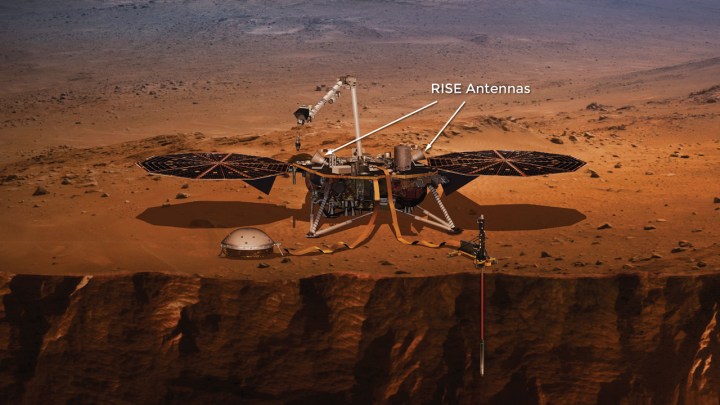We’re constantly learning more about the other planets in our solar system, especially Mars thanks to the multiple missions currently active there. But even retired missions can provide data for years after they have concluded, as is the case with a recent study that used data from the InSight lander.
The mission officially ended in December 2022 when the lander’s solar panels became too covered in dust to provide enough power to keep it running. But recent analysis of data collected by the lander has revealed some surprises about Mars, including the fact that the planet is rotating faster every year.

The researchers used an instrument on InSight called RISE, or the Rotation and Interior Structure Experiment, which reflects radio waves sent by NASA’s Deep Space Network. By measuring how the frequency of this reflected signal changes by tiny amounts, the researchers could accurately measure how fast the planet is rotating.
“What we’re looking for are variations that are just a few tens of centimeters over the course of a Martian year,” said RISE’s principal investigator, Sebastien Le Maistre of the Royal Observatory of Belgium, in a statement. “It takes a very long time and a lot of data to accumulate before we can even see these variations.”
They found that the planet is spinning ever so slightly faster each year, corresponding to a reduction in the length of a Martian day by a fraction of a millisecond per year. It took very careful measurements to be able to see this small difference, taken over a period of 900 Martian days.
“It’s really cool to be able to get this latest measurement – and so precisely,” said InSight’s principal investigator, Bruce Banerdt of NASA’s Jet Propulsion Laboratory. “I’ve been involved in efforts to get a geophysical station like InSight onto Mars for a long time, and results like this make all those decades of work worth it.”
This effect is small, and scientists are still discussing what the cause could be. One theory is that the caps of ice found at Mars’s poles could be melting or growing, which would change the distribution of mass on the planet. Another finding from the data is that Mars’s core, which is liquid, is sloshing around in a way that allows for more accurate measurement of the core’s size. The latest measurement is that the core’s radius is between 1,112 and 1,150 miles.
Scientists will continue to work with data from RISE, learning more about Mars’s interior, hopefully for many years to come.
“It’s a historic experiment,” said Le Maistre. “We have spent a lot of time and energy preparing for the experiment and anticipating these discoveries. But despite this, we were still surprised along the way – and it’s not over, since RISE still has a lot to reveal about Mars.”
The research is published in the journal Nature.
Editors’ Recommendations
